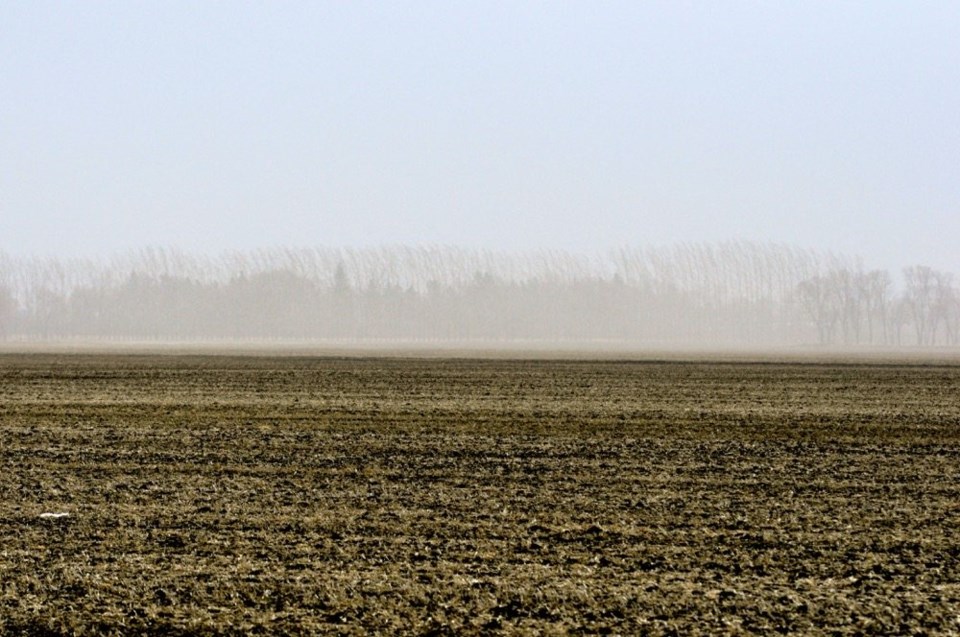It seemed like the beginning of the end of the world: friends and neighbours dying of “dust pneumonia” and massive dust storms sweeping the land.
These are some of the recollections of people who were alive in the “Dirty 30s,” recorded for an oral history project by Daryl Ritchison, interim director of the North Dakota Agricultural Weather Network at North Dakota State University.
Ritchison presented these stories to kick off the plenary session of the Manitoba Soil Science Society’s annual meeting in Winnipeg February 1, and again at CropConnect on February 15. The recorded voices tell a cautionary tale that is in danger of being forgotten in today’s agricultural context, according to several soil experts.
“A good deal of the soil loss and the dust storms in the 1930s were the result of cultural practices in the way farming was conducted — not much cover on the ground, a lot of fallow, a lot of tillage,” says Jim Tokarchuk, executive director of the Soil Conservation Council of Canada.
“What we’re hearing is a lot of anecdotal evidence that we may have forgotten some of the lessons about keeping soil covered, about tillage practices,” he says.
Tillage and low residue
Laryssa Stevenson, production specialist for Manitoba Pulse & Soybean Growers, says soil conservation is top of mind at MPSG these days due to a general perception among soybean producers that they need to blacken the soil prior to seeding.
MPSG has been “hyper aware” of the topic of soil conservation considering the impacts low residue crops like soybean coupled with tillage can have on the soil. “It’s not something we want the young generation of farmers to forget about,” she says.
Soil conservation is not just a problem for soybean producers. According to David Lobb, a professor at the University of Manitoba’s department of Soil Science, there has been a steady decline in public awareness and government support for soil conservation in Canada.
“There’s a pervasive belief that we know all there is to know about soil erosion and soil conservation,” Lobb said during his presentation. “A sense of fatigue has set in.”
According to Lobb, the cost of soil erosion has continued to increase since the 1970s and 1980s, because areas where erosion is controlled through soil conservation practices still suffer from historical losses, and restoring productivity to eroded areas is an extremely slow process.
“Soil erosion continues to cost Canadian agriculture and the economy substantially,” says Lobb.
It’s not only the research community that’s concerned. Robert Stevenson, a Manitoba farmer who was an early adopter of zero till in the 1980s says there’s a general perception in the farming community that soil erosion and degradation are in the past.
“I think this perception is more than a bit misleading. I think the biggest issues are ahead of us,” said Stevenson. The erosion issues in the Red River Valley are immense.
Tokarchuk says there are some hopeful signs that soil conservation will be a renewed priority for government and industry groups.
“I know that decisions of what happens on the farm are enormously complex and farmers do the best they can — nobody wants to ruin their land,” says Tokarchuk. “But soil health needs to inform management decisions people make every year, and on the public policy side we have a lot of work to make that happen.”
Laryssa Stevenson says MPSG is investing in projects to help farmers make decisions backed by research.
The association is supporting work by Agriculture and Agri-Food Canada researcher Ramona Mohr looking at the effects of soil temperature at different planting dates and residue management on soybean, and also helping to sponsor University of Manitoba researcher Yvonne Lawley’s work comparing soybean residue management strategies.
“Once we understand the differences, we can inform growers of the best management practices to optimize plant establishment and maintain the benefits of zero tillage,” says Stevenson.




